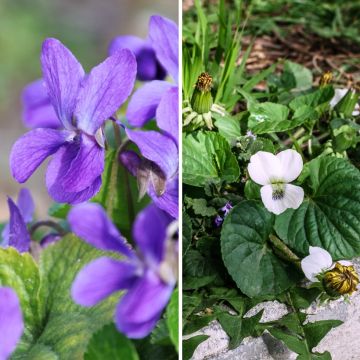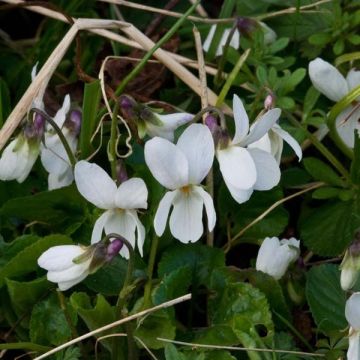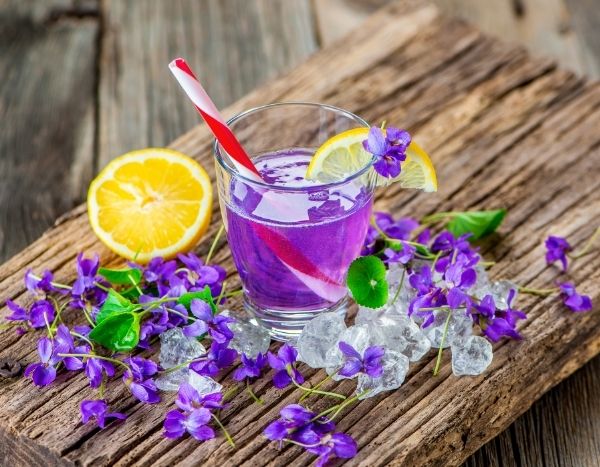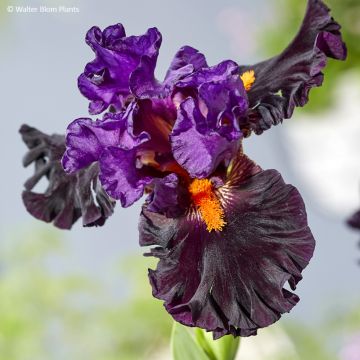

Viola sororia Albiflora


Viola sororia Albiflora
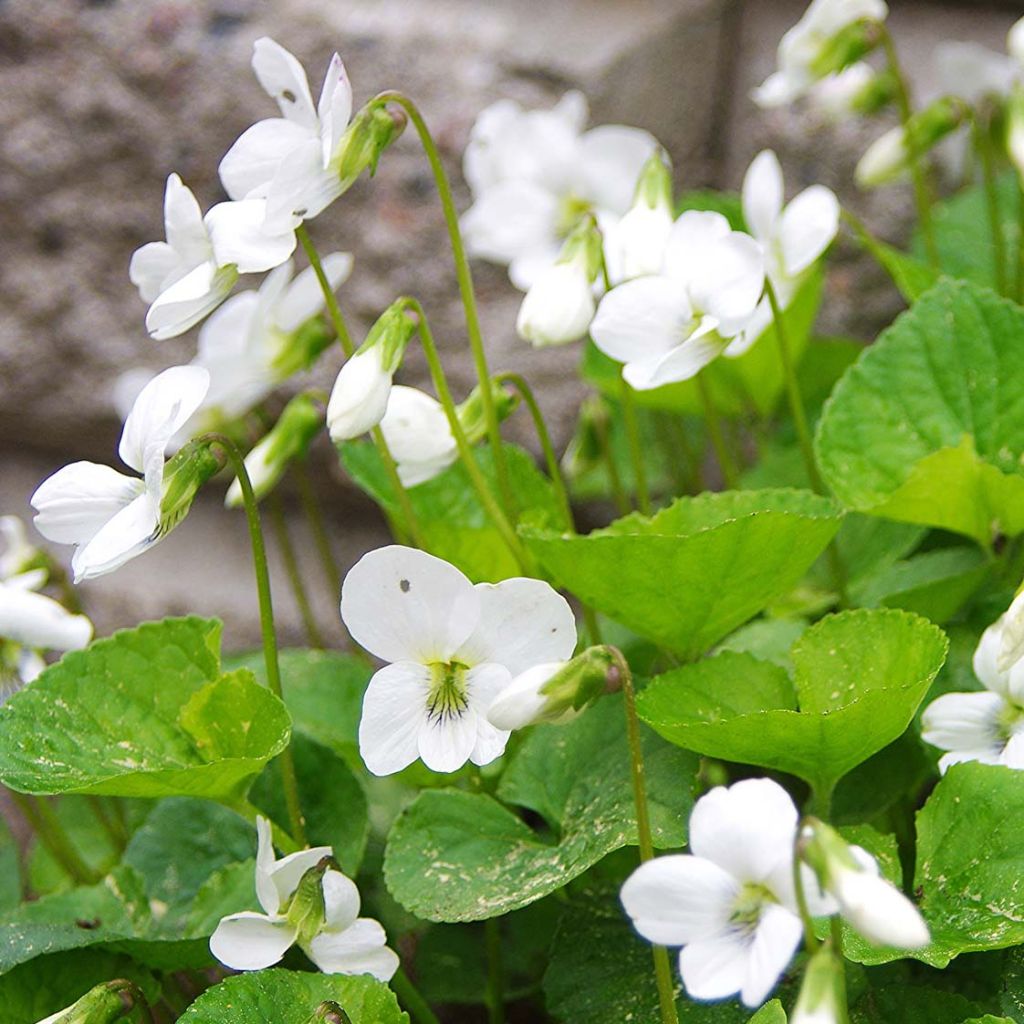

Viola sororia Albiflora
Viola sororia Albiflora
Viola sororia Albiflora
Violet 'Albiflora'
Very well
Doris, 06/02/2021
Special offer!
Receive a €20 voucher for any order over €90 (excluding delivery costs, credit notes, and plastic-free options)!
1- Add your favorite plants to your cart.
2- Once you have reached €90, confirm your order (you can even choose the delivery date!).
3- As soon as your order is shipped, you will receive an email containing your voucher code, valid for 3 months (90 days).
Your voucher is unique and can only be used once, for any order with a minimum value of €20, excluding delivery costs.
Can be combined with other current offers, non-divisible and non-refundable.
Home or relay delivery (depending on size and destination)
Schedule delivery date,
and select date in basket
This plant carries a 12 months recovery warranty
More information
We guarantee the quality of our plants for a full growing cycle, and will replace at our expense any plant that fails to recover under normal climatic and planting conditions.

Would this plant suit my garden?
Set up your Plantfit profile →
Description
Viola sororia 'Albiflora' is the pure white-flowered form of a robust North American violet perfectly at home in most of our climates. It is very perennial and eventually forms superb carpets of small, well-defined clumps. In spring, this carpet of light green leaves comes alive with a multitude of small white flowers, which are very bright in the shaded areas where it thrives. Very hardy, very long-lasting, and undemanding, it is capable of growing anywhere, even in dry conditions under trees. Create beautiful maintenance-free borders with this violet!
Viola sororia, from the Violaceae family, is native to the northeastern United States and Canada, where it can be found in forests, as well as meadows, slopes, and along roadsides. It is also known as the Northern White Violet (Viola septentrionalis), or Butterfly Violet (Viola papilionacea).
This is a perennial plant that spreads and spreads on the ground thanks to large fleshy rhizomes on the surface and quickly forms large dense carpets, 10 to 15 cm (4 to 6in) high. The leaves and flowers emerge directly from the rhizomes and form a basal rosette. Its leaves, long and 7 cm (3in) wide, often heart-shaped, with toothed edges, are a beautiful acid green to bright green, with a shiny appearance. The 'Albiflora' variety is distinguished by a pure white-coloured flowering, which blooms from mid-March to June depending on the regions and climate, for 4 to 6 weeks. Each flower, 1.5 cm (1in) in diameter, is composed of 5 petals, one of which has a spur. This flowering is nectar-rich but not fragrant. This violet self-seeds quite easily in the garden and can be easily divided by separating the small clumps. The deciduous foliage disappears in winter.
This Viola sororia Albiflora tolerates both heavy and light soils and prefers to grow in shade or partial shade, even under large trees or at the base of hedges where it can compete with the roots. It is a worry-free plant that thrives from north to south of our country: it withstands harsh winters and tolerates dry soils in summer, going dormant and losing its foliage. It finds its place on the edge of woodlands, as well as in partially shaded borders. Pair it with white Cyclamen coum, Primula vulgaris, hepaticas, or Brunnera macrophylla 'Looking Glass', for example. It can also be planted in a short grass meadow (where it sometimes self-seeds spontaneously), as long as it is not mowed too often or too short in spring.
Violets and pansies belong to the Viola genus. How to differentiate a violet from a pansy? By the arrangement of their petals: the former has two upright petals and three downward-facing petals, while the latter has four upright petals, with the fifth, larger than the others, bending its head. Violets are almost all native to temperate regions of the world. The vast majority of them are perennial, but hybrids with large flowers are sold and used as annual plants.
Report an error about the product description
Viola sororia Albiflora in pictures




Flowering
Foliage
Plant habit
Botanical data
Viola
sororia
Albiflora
Violaceae
Violet 'Albiflora'
North America
Other Viola - Violets
View all →Planting and care
Easy to grow and fast-growing, cultivate Viola sororia in partial shade or shade, or in morning sun. It is undemanding in terms of soil, accepting heavy or lighter soils, acidic, neutral or slightly alkaline. This species can tolerate dry soils in summer: under trees, the soil is often dry on the surface, regardless of the region. Water regularly in the first year, but not excessively. During dry periods, its foliage may disappear, and the plant enters a dormant state. Cutting back the old foliage will allow new foliage to appear as soon as the rains return.
Planting period
Intended location
Care
Planting & care advice
-
, onOrder confirmed
Reply from on Promesse de fleurs
Similar products
Haven't found what you were looking for?
Hardiness is the lowest winter temperature a plant can endure without suffering serious damage or even dying. However, hardiness is affected by location (a sheltered area, such as a patio), protection (winter cover) and soil type (hardiness is improved by well-drained soil).

Photo Sharing Terms & Conditions
In order to encourage gardeners to interact and share their experiences, Promesse de fleurs offers various media enabling content to be uploaded onto its Site - in particular via the ‘Photo sharing’ module.
The User agrees to refrain from:
- Posting any content that is illegal, prejudicial, insulting, racist, inciteful to hatred, revisionist, contrary to public decency, that infringes on privacy or on the privacy rights of third parties, in particular the publicity rights of persons and goods, intellectual property rights, or the right to privacy.
- Submitting content on behalf of a third party;
- Impersonate the identity of a third party and/or publish any personal information about a third party;
In general, the User undertakes to refrain from any unethical behaviour.
All Content (in particular text, comments, files, images, photos, videos, creative works, etc.), which may be subject to property or intellectual property rights, image or other private rights, shall remain the property of the User, subject to the limited rights granted by the terms of the licence granted by Promesse de fleurs as stated below. Users are at liberty to publish or not to publish such Content on the Site, notably via the ‘Photo Sharing’ facility, and accept that this Content shall be made public and freely accessible, notably on the Internet.
Users further acknowledge, undertake to have ,and guarantee that they hold all necessary rights and permissions to publish such material on the Site, in particular with regard to the legislation in force pertaining to any privacy, property, intellectual property, image, or contractual rights, or rights of any other nature. By publishing such Content on the Site, Users acknowledge accepting full liability as publishers of the Content within the meaning of the law, and grant Promesse de fleurs, free of charge, an inclusive, worldwide licence for the said Content for the entire duration of its publication, including all reproduction, representation, up/downloading, displaying, performing, transmission, and storage rights.
Users also grant permission for their name to be linked to the Content and accept that this link may not always be made available.
By engaging in posting material, Users consent to their Content becoming automatically accessible on the Internet, in particular on other sites and/or blogs and/or web pages of the Promesse de fleurs site, including in particular social pages and the Promesse de fleurs catalogue.
Users may secure the removal of entrusted content free of charge by issuing a simple request via our contact form.
The flowering period indicated on our website applies to countries and regions located in USDA zone 8 (France, the United Kingdom, Ireland, the Netherlands, etc.)
It will vary according to where you live:
- In zones 9 to 10 (Italy, Spain, Greece, etc.), flowering will occur about 2 to 4 weeks earlier.
- In zones 6 to 7 (Germany, Poland, Slovenia, and lower mountainous regions), flowering will be delayed by 2 to 3 weeks.
- In zone 5 (Central Europe, Scandinavia), blooming will be delayed by 3 to 5 weeks.
In temperate climates, pruning of spring-flowering shrubs (forsythia, spireas, etc.) should be done just after flowering.
Pruning of summer-flowering shrubs (Indian Lilac, Perovskia, etc.) can be done in winter or spring.
In cold regions as well as with frost-sensitive plants, avoid pruning too early when severe frosts may still occur.
The planting period indicated on our website applies to countries and regions located in USDA zone 8 (France, United Kingdom, Ireland, Netherlands).
It will vary according to where you live:
- In Mediterranean zones (Marseille, Madrid, Milan, etc.), autumn and winter are the best planting periods.
- In continental zones (Strasbourg, Munich, Vienna, etc.), delay planting by 2 to 3 weeks in spring and bring it forward by 2 to 4 weeks in autumn.
- In mountainous regions (the Alps, Pyrenees, Carpathians, etc.), it is best to plant in late spring (May-June) or late summer (August-September).
The harvesting period indicated on our website applies to countries and regions in USDA zone 8 (France, England, Ireland, the Netherlands).
In colder areas (Scandinavia, Poland, Austria...) fruit and vegetable harvests are likely to be delayed by 3-4 weeks.
In warmer areas (Italy, Spain, Greece, etc.), harvesting will probably take place earlier, depending on weather conditions.
The sowing periods indicated on our website apply to countries and regions within USDA Zone 8 (France, UK, Ireland, Netherlands).
In colder areas (Scandinavia, Poland, Austria...), delay any outdoor sowing by 3-4 weeks, or sow under glass.
In warmer climes (Italy, Spain, Greece, etc.), bring outdoor sowing forward by a few weeks.































